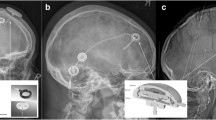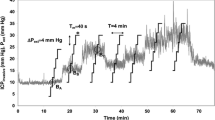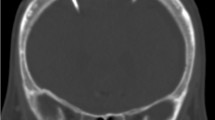Summary
Intracranial pressure monitoring has a key role in the management of patients developing increased intracranial pressure (ICP). We adopted the Camino fiberoptic system for intracranial pressure measurement in 1993 in our neurosurgical department. The aim of this study was to investigate reliability, handling characteristics and complication rate of the Camino intracranial pressure device.
In an eighteen month period, we prospectively investigated 118 patients with intracranial pathology undergoing Camino fiberoptic intraparenchymal or intraventricular ICP monitoring. The assessment of reliability of ICP monitoring according to patients clinical condition, to cranial computed tomography (CCT) findings and ICP waveform was carried out. Position of the probe and intracranial bleeding complications related to probe insertion were confirmed by CCT. Technical complications, as well as infections due to the device, were documented. In vivo recalibration was performed in 22 patients. At the end of the measuring period the drift of the probe was evaluated and the accuracy of the fiberoptic device was measured by performing a two point calibration.
Recordings of intracranial pressure were carried out with 136 Camino devices (104 parenchymal, 32 ventricular) in 118 patients with an average measuring time of 94.1±79.1 hrs. One hundred and fifteen Camino intracranial pressure devices (85.2%) demonstrated reliability according to the predetermined clinical parameters. The actual mean drift after removal of the devices was 3.4 mmHg±3.2 with an actual daily drift of 3.2±17.2 mmHg. Recorded complications included infection (0.7%), intraparenchymal haematoma (5.1%), and a high complication rate (23.5%) with regard to technical aspects. The Camino intracranial pressure system offers reliable ICP measurements in an acceptable percentage of devices, and the advantage of in vivo recalibration. The high incidence of technical complications identifies a need for improvement in the fiberoptic cable and the fixation system.
Similar content being viewed by others
Author information
Authors and Affiliations
Rights and permissions
About this article
Cite this article
Münch, E., Weigel, R., Schmiedek, P. et al. The CAMINO Intracranial Pressure Device in Clinical Practice: Reliability, Handling Characteristics and Complications. Acta Neurochir (Wien) 140, 1113–1120 (1998). https://doi.org/10.1007/s007010050224
Issue Date:
DOI: https://doi.org/10.1007/s007010050224




